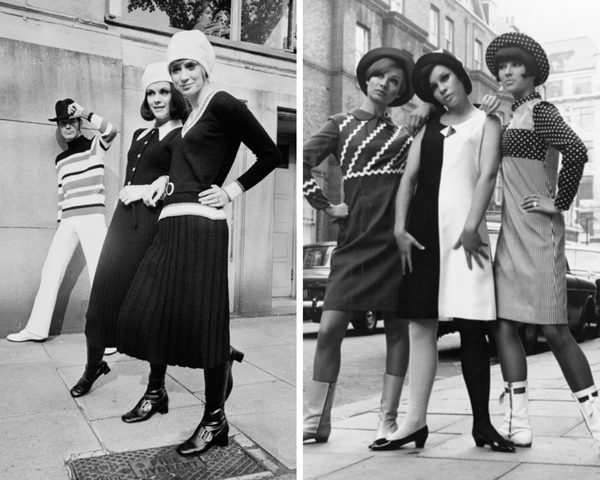As the 50s ended, feminism’s second wave took hold, as women had joined the workforce, gained independence and began making their own money. In the 1960s, women were seeking more freedoms, which meant being less inclined to settle into marriage. This new feminine ideal was dubbed the “Single Girl”.


the Single Girl represented movement, was economically independent and had her own career. Fashions of the time reflected this new trend, and the ‘Working Girl” became the target demographic for magazines and clothing companies. The Single Girl defined femininity outside of the traditional patriarchal construction that was laden through previous decades.

She no longer simply wore house-dresses and aprons. Women started wearing trousers, and there were more ready-to-wear options than ever before with the increase in mass produced clothing. Pantsuits became popular as well. They were copied from men’s suits and tailored to feminine proportions. Some workplaces forbade women to wear pantsuits because they thought they were an insult to femininity and too empowering for women, which was deemed disrespectful to men. This only made them more popular!

Fashion didn’t just cater to wealthy ladies of leisure anymore. The pret-a-porter fashions meant that designers were creating more youthful looks marketed to young women working and living outside of the domestic environment they had been previously conditioned to join. Mini skirts and dresses, more comfortable androgynous silhouettes like shift dresses and looser fitting waistlines, separates, and bold makeup and hairstyles were the leading fashions of the day.

In fashion photography, the Single Girl ideal was presented through images of young women in motion; walking or running, being active outdoors alone, or with friends. These photographs embodied the freedoms that women felt, and targeted the Working Girl who could afford her own clothing and be out of the house.


Models became household names like Twiggy, Jean Shrimpton and Pattie Boyd and the first rise of “It Girls” took hold, influencing the young women of the day. Audrey Hepburn’s pared down aesthetic of black turtleneck and capris was more relatable than her couture gowns from the 50s.

Breakfast at Tiffany’s was released in 1961, based on Capote’s 1958 novel, and while it differs from the novel, it is a story told about a charming, elusive single woman that the 1960s Single Girl might imagine herself to be.

The release of Helen Gurley Brown’s controversial book “Sex and the Single Girl” came out in 1962, which aided the independent, feminist movement of allowing women to feel free from the burdens of having to marry young and immediately start a family. She became the editor of Cosmopolitan magazine, and completely changed the discourse around women, sex, and their freedoms. She presided as editor of Cosmo for 3 decades, from 1965 - 1997. Cosmo was considered the women’s Esquire, offering the new perspective that women could allow themselves the same freedoms as men when it came to sex and their independence.


Other influences on the single women of the day were Pan Am Stewardesses or Mary Tyler Moores, career women who were jet-setting and living glamorous lives. In 1965 “the working girl” officially became the target customer for fashion. Ready-to-wear fashion was as useful as it was pleasurable, and perfect for the modest budget of a Single gal.

